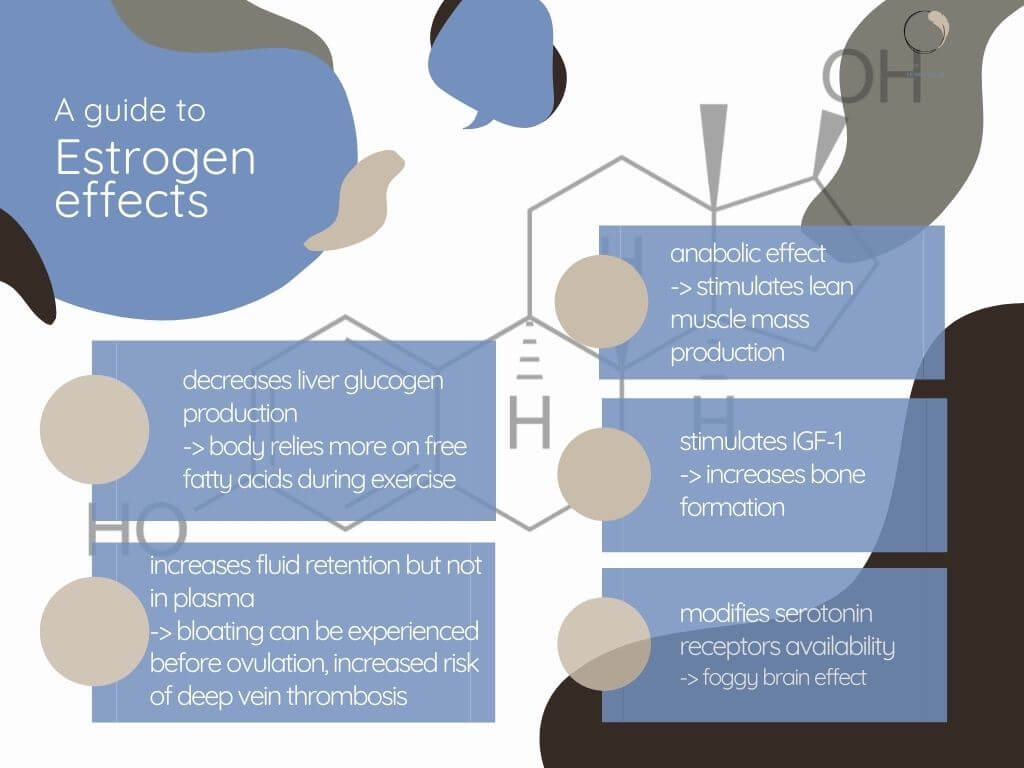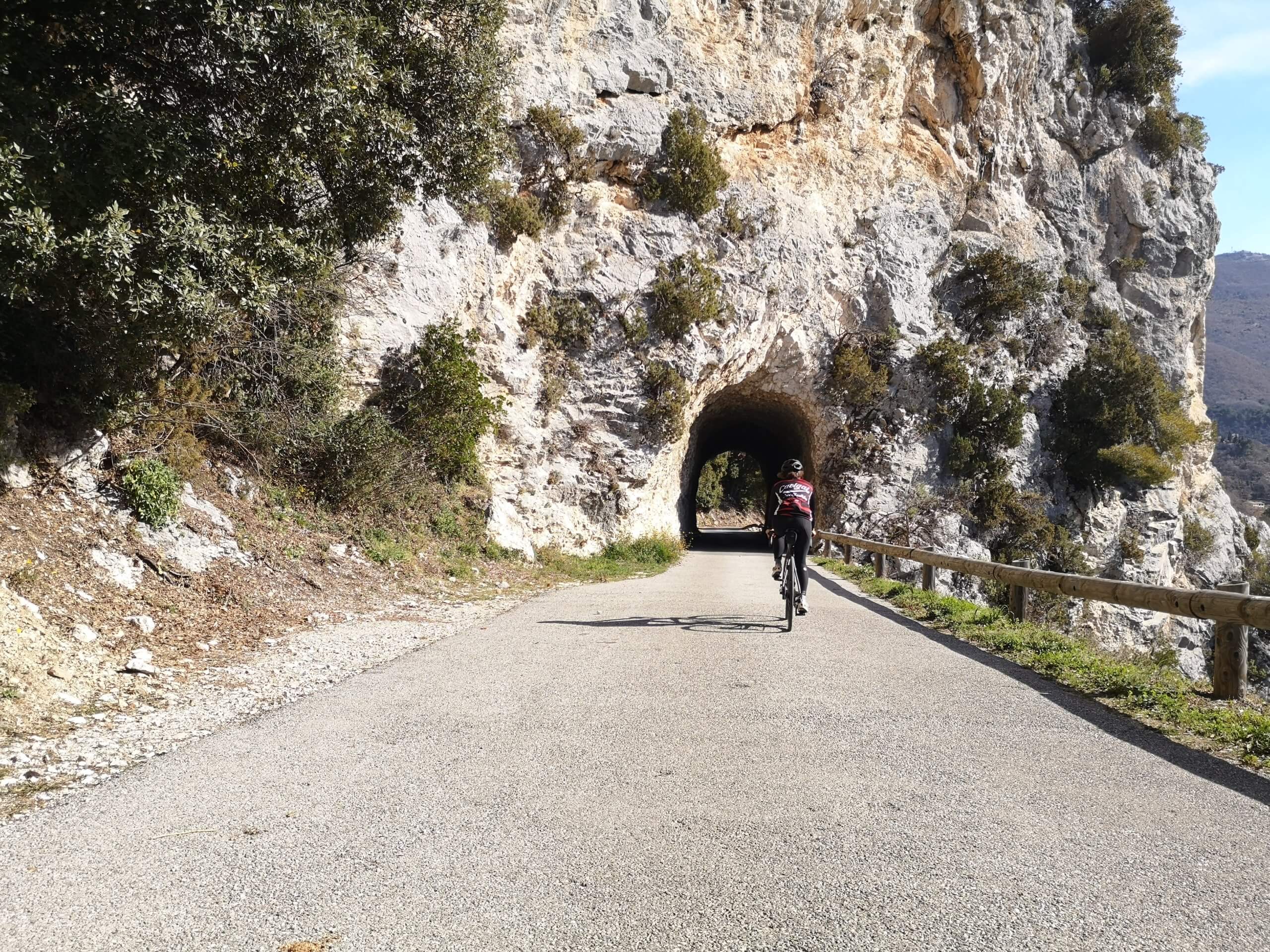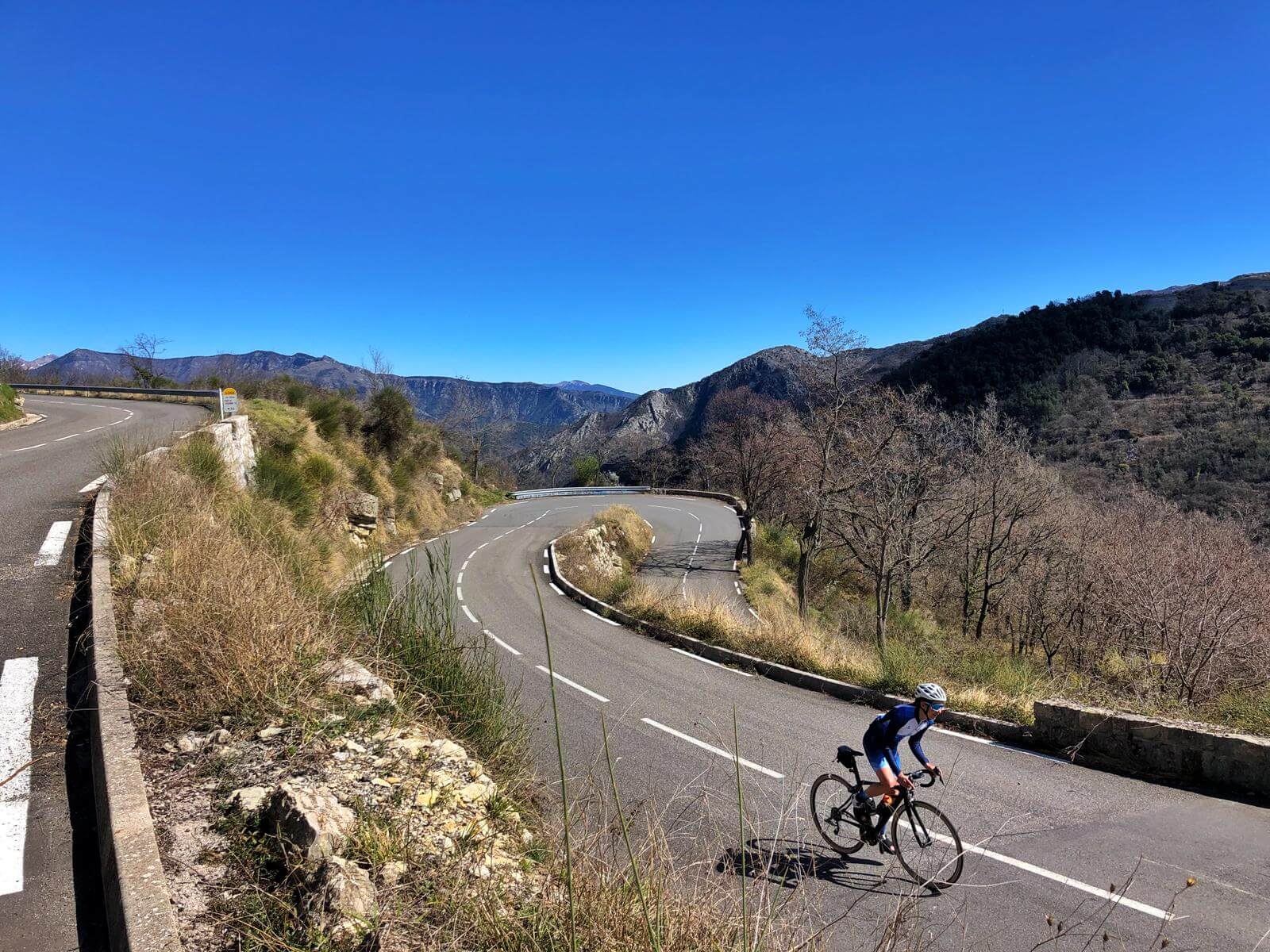Females are different than males. As a woman, train differently than a man then ! Sounds straightforward ? Let’s see if that’s what we do, and how we could do it. In endurance training, we have all heard about the classic year periodization with macro, meso and micro cyles, each meso cycle being for instance three weeks of building training load, followed by one week of de-load. This periodization strategy comes from many studies and especially those led by Bompa, which established that this training regimen had the best effect in terms of physiological adaptations and recovery/fatigue. I use these strategies when I build training plans for male cyclists such as these.
However… these studies were done on men. Many women have followed this training regimen, they all have survived, but with new research being done on female endurance athletes, we are now able to understand better how the female bodies react to endurance and resistance training, and how we can optimize the training periodization to include female physiologies and work with them.
We will focus here on training with your natural cycle : this article focuses on women who have natural menstrual cycles, please refer to other articles for women using oral contraceptive pill, and women on (peri) menopause. For women who have lost their menstrual cycles, I highly recommend reading No period. Now what ? in order to find ways to regaining your cycles : it’s a real condition and not a curse !
For all, I recommend the book ROAR from Dr Stacy Sims.
Why is it important to adapt the classic periodization to your female physiology ?
The menstrual cycles of women are led by hormonal changes. Among the hormones taking part in these changes, some have a strong effects on how the female body will be fuelled at rest and during exercise, and also on how muscles could be either built or broken down.
When Bompa and others made the first studies on how to periodize training in order to lead to the best performance improvements, the human beings on which the different hypothesis were tried on were men. So far, most of us women, athletes and coaches alike, have simply decided to apply the same theory to the female bodies, because there was no science to prove it was right or wrong !
Today, more and more studies are being published based on female athletes, and science starts proving the different impacts of the menstrual cycles hormones on training and performance, because the female sex hormones have impacts on almost every system of the female bodies, they are not just for reproduction ! As Dr Stacy Sims powerfully summarizes it : women are not small men.
The science you need to know
My goal here is to provide you with just enough information so that you can be empowered to train with your hormones, not trying to force your body to react like its male counterpart, but to accept that the female body deserves a specific way to flourish and perform.
The main thing to know is that through one menstrual cycle, the female body goes through two phases, which have usually the same length from one cycle to the next. Women have cycles between 24 and 38 days and most women have a 35 days cycle. However, you will see most graphic based on the theoretical 28 days cycle (as shown in the graphic below, from Vink et al. 2017), with 14 days for each phase, even though the luteal phase can be longer than the follicular phase.
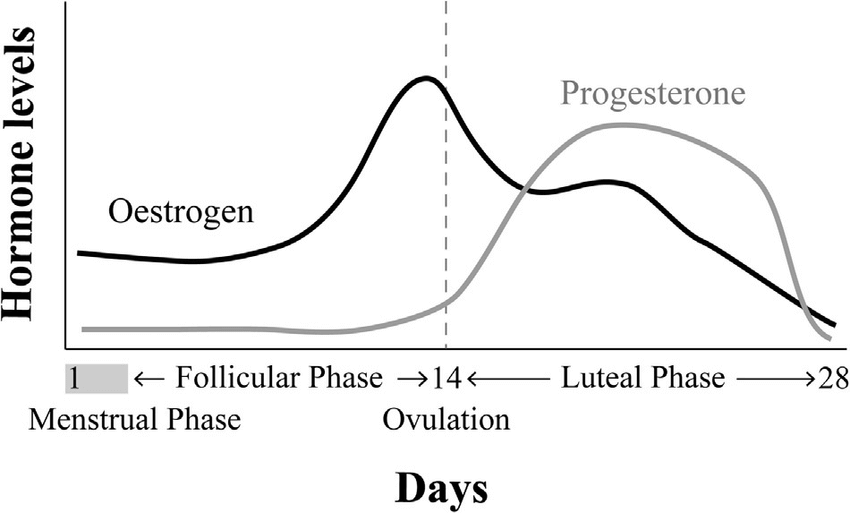
Follicular phase : build muscle and perform
The follicular phase starts on the first day of the period (bleeding), it is a phase during which the egg is matured and made ready to be released. The phase is dominated by estrogen hormones.
The estrogens will increase throughout the follicular phase and reach a peak just before ovulation.
Luteal phase : maintain and take care
The luteal phase starts at the onset of ovulation (which you can determine by watching your basal temperature or with an ovulation predictor kit), it is a phase when the inner lining of the uterus is being built up (which uses nutrients and energy !) thanks to the drive of high progesterone, up until the egg either attaches to it (fecundation) or does not, which then sends the hormonal message to shed this lining : this is the end of the cycle and periods appear.
The progesterone is very high during the luteal phase, estrogens are still also fairly high during this phase, which is thus called « the high hormone phase ».
Testosterone
Women have approximately and on average 10 times less testosterone than men (Burd et al., 2008), so they can count less on its powerful acute and chronic anabolic effects (Kraemer, 2005).
Using your knowledge to train smarter
The periodization strategy established by Bompa will probably lead to increases in performances for women. However, due to the cycling effects of the female sex hormones, recovery and thus adaptation will differ so it might be interesting to use the best abilities of our bodies through a menstrual cycle.
- First and foremost, you need to know your cycle. You can download the free Fitrwoman or Wild.ai App to start tracking your cycle and get to know its length and the length of your follicular phase.
- During your follicular phase, maximise the ability of your body to build lean muscle mass and fuel. It is thus the best time for
- high intensity training, VO2max training
- heavy weight lifting
- fuel each of your workouts correctly and aim at 2g of protein per kg of body mass (Dr Stacy Sims) per day
- During your luteal phase, your body will have more struggle to recover and it will feel harder so use this period for
- tempo or sweet spot training
- eat more during your workouts
- aim at 2.3g of proteins per kg of body mass (Dr Stacy Sims) per day
You will see below a summary of these notions applied to two different cycles : one 40 day cycle in brown, and one much shorter cycle of 21-25 days. The idea is to show you how to adapt the general knowledge to the specific length of your own follicular and luteal phases.
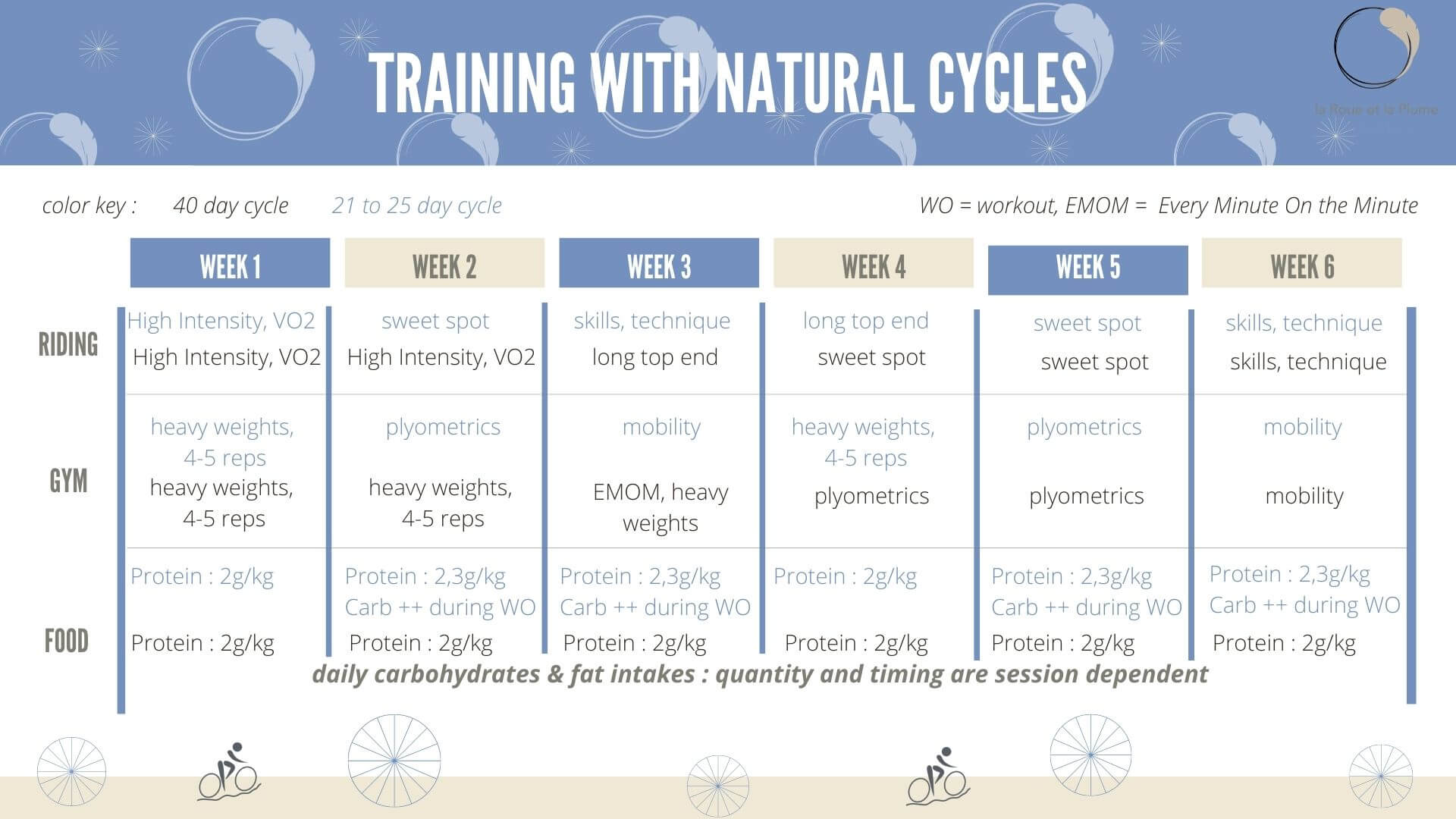
Of course, this short article will never encompass the variety of situations and I strongly advise you to reach out for specialists either to make the most of your training or to resolve hormones issues. Take care and ride well !
